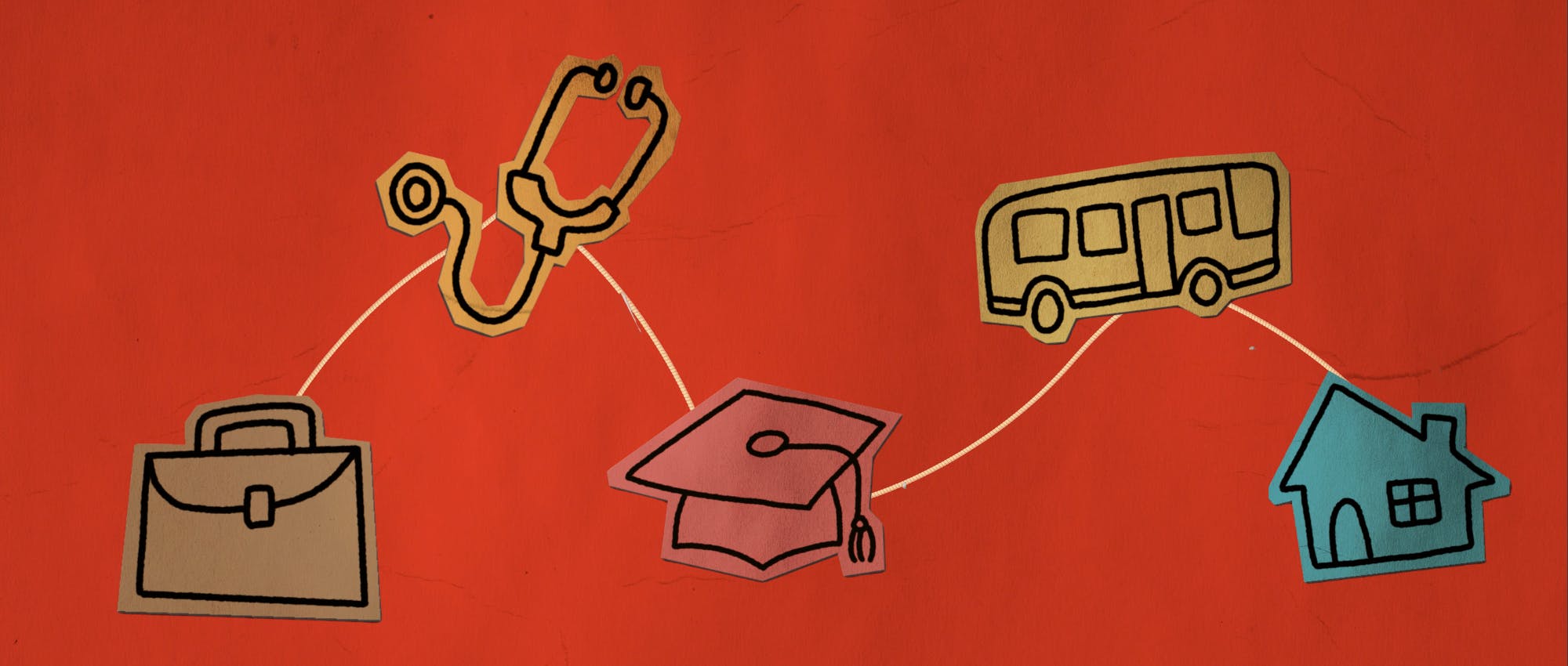Key Takeaways
- Alberta is launching the Alberta Disability Assistance Program (ADAP) in July 2026 to support people with disabilities who are deemed capable of employment. This marks a shift from the current model to a dual-track system based on ability to work.
- ADAP will offer lower monthly payments than AISH (maximum of $1,740 vs. $1,940) and include expanded employment services. Both programs will maintain non-financial benefits like prescription coverage and dental care.
- Existing AISH recipients will be moved to ADAP, with temporary stabilization payments until the end of 2027.
- There are concerns about reduced financial support under ADAP, potential administrative backlogs, and a lack of clarity on key details like family benefits, employment income claw-back rates, and representation.
Policy Issue
In Alberta, income support and other benefits for people with disabilities are primarily provided through the Assured Income for the Severely Handicapped (AISH) program. In June 2025, there were over 79,300 AISH recipients, marking a year-over-year increase of three percent. More than 23,000 of those recipients lived in the Calgary region [1].
In early 2025, the Government of Alberta (GoA) announced its plan to introduce a new income support program intended to better aid Albertans with disabilities in gaining fulfilling employment. The new program is called Alberta Disability Assistance Program (ADAP) and is scheduled to begin in July 2026 [2].
The introduction of ADAP marks a shift in Alberta's approach to income support for people with disabilities. The new approach will segment people with disabilities requiring income support into two groups based on their perceived ability to work. Those deemed able to work will be supported through ADAP and those deemed unable to work will be supported through AISH. For context, 16.4% of AISH recipients earned employment income in June 2025 [3].
When the new system takes effect next year, existing AISH recipients will be moved to ADAP though they will have an opportunity to apply to move back to AISH. Those transitioned to ADAP will receive payments to maintain their monthly benefits at AISH levels until December 31, 2027. Anyone requesting to return to AISH after December 2027 will need to complete a new Disability Assistance Medical Report for reassessment. A Disability Assistance Medical Report is a form completed by healthcare providers that gives details of a person’s disability including how it impacts their ability to work.
For new applicants applying for disability income support, there will be one application process with three possible outcomes:
- AISH - for individuals assessed as unable to work;
- ADAP - for individuals assessed as having the capacity for work; and
- those determined to be not eligible for either program.
Any ADAP recipients who experience health changes and are no longer able to work will have an opportunity to request a transfer to AISH. An appeal process will also be available for those who disagree with their AISH eligibility assessment, except in cases where the AISH Medical Review Panel has already ruled. The new AISH Medical Review Panel will consist of healthcare professionals tasked with determining applicants’ eligibility for AISH. It does not appear that the panel will review every application; instead, it will provide final approval for AISH, and review contested cases. Decisions made by the AISH Medical Review Panel will be final, without new medical information [4].
Details about the upcoming changes to Alberta's income supports for people with disabilities have yet to be finalized. The information shared in this blog is based on the GoA’s proposed ADAP guidelines published in August 2025 and may change [5]. Based on the current information, Table 1 provides a summary of proposed key program details comparing AISH to ADAP.
Table 1. Proposed Program Details AISH versus ADAP, Starting July 1, 2026

Note: It is unclear if the current AISH requirement that recipients have applied to all other benefits for which they are eligible will remain in effect post July 1, 2026.
Note: Benefit amounts and claw-back levels are likely to vary based on family size and income source. Table 1 includes details for employment income only.
Source: Transforming Disability Income Assistance in Alberta – Discussion Guide. (August 2025). Government of Alberta. Transforming Disability Income Assistance in Alberta Discussion Guide. (Accessed: September 26, 2025).
Source: AISH Eligibility. (No Date). Government of Alberta. https://www.alberta.ca/aish-eligibility (Accessed: September 29, 2025).
What the Data Shows
More than 79,300 Albertans received AISH in June 2025, with most living in the Calgary and Edmonton regions (See Figure 1 below). If a large share of current AISH recipients request to remain on AISH, the staff responsible for processing these requests could face high workloads. This raises concerns about potential backlogs or delays in processing requests, which can lead to stress and anxiety for applicants. It will be important that the program is properly resourced to avoid unnecessary hardship for applicants.
Figure 1. AISH Recipients, By Region, June 2025

Note: The Calgary and Edmonton regions are administrative zones consisting of a larger area than just the urban centers.
Source: Alberta Assisted Living and Social Services Open Data – Assured Income for the Severely Handicapped (AISH). (August 2025). Government of Alberta. Assured Income for the Severely Handicapped (AISH) Caseload - Open Government (Accessed: September 26, 2025).
Table 2 shows the maximum disability income support in 2024 for a set of example households.6 Compared to other provinces, AISH offered the highest benefit for single adults and was comparable for families with children. Though this comparison is helpful for context, it is important to note that research suggests that no province’s income support for people with disabilities currently meets their province’s official poverty line [7] and also that eligibility requirements for disability supports may be more restrictive in Alberta than in other provinces [8]. At the time of writing, it was unclear how ADAP would support families in terms of additional payments, as is currently done by AISH. Given the higher costs faced by families, providing them with enough income is essential to protect them from falling deeper into poverty and supporting their well-being.
Table 2 - Income Support for People with Disability Across Canada, 2024

Abbreviations: AIM – Aim for Employment; AISH – Alberta Income for the Severely Handicapped; BFE – Barriers to Full Employment; MAN – Manpower Training Measure; MBFE – Manitoba Barriers to Full Employment; MSPD – Manitoba Supports for Persons with Disabilities.
Source: Overview: Welfare Incomes across Canada. (September 2025). Maytree. Overview: Welfare incomes across Canada - Maytree. (Accessed: September 29, 2025).
Looking Ahead
The proposed changes to Alberta’s disability benefits have left many AISH recipients worried about their financial security. Under the current system, many AISH recipients with employment income are likely better off financially versus what has been proposed under the new approach. This is due to AISH currently having a higher earned exemption rate of $1,072/month compared to the $350/month for both AISH and ADAP planned to take effect in July 2026 [9,10]. The earned exemption rate refers to the amount of income someone can earn before their benefit payments are reduced. Furthermore, setting ADAP payments at $200/month below AISH may have negative outcomes on recipients, impacting their ability to meaningfully participate in their communities and without employment income, push them further into poverty.
Specific details on key aspects of ADAP have not been made available. For instance: 1) the value of additional payments for those with children; and 2) whether those with disabilities will be represented on the AISH Medical Review Panel. The lack of these and other details makes it difficult to predict the potential impacts of the policy change.
As previously mentioned, many people may want to remain on AISH, and the short period for stabilization payments for those moving to ADAP may cause anxiety. Recipients may be concerned that these payments will run out before their case is reviewed.
Given the lack of finalized details and breadth of the proposed changes to the program, the full effects on people who rely on these benefits will likely be unclear until after the program starts.



